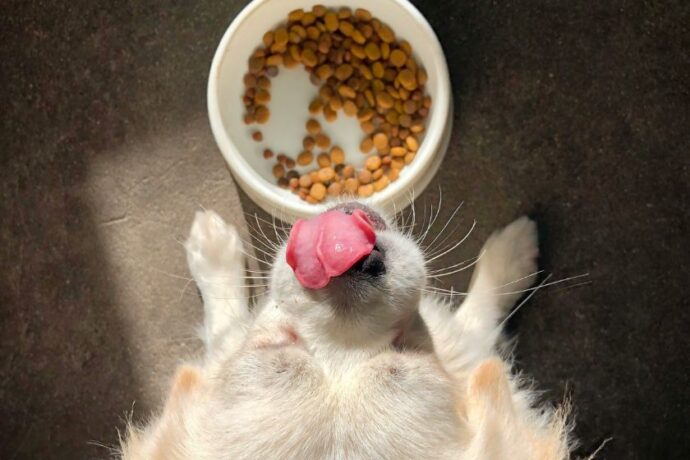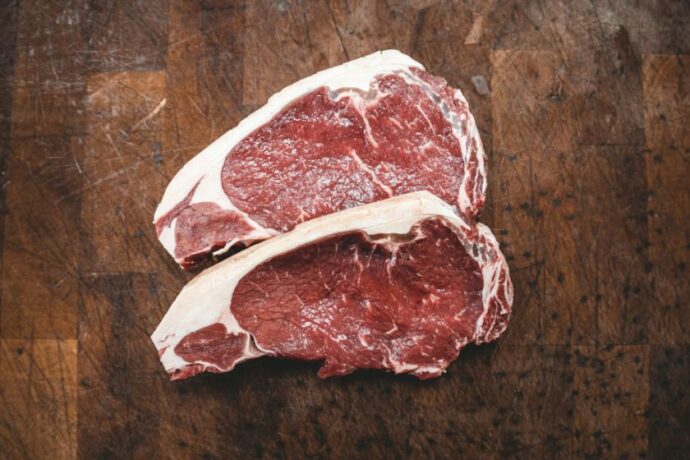
Including a Puppy Feeding Schedule by Age & Weight
So, you have a brand new puppy — now the real fun begins! You might have puppy-proofed your home and scheduled all of the vet visits, but have you nailed down their feeding schedule? Understanding your puppy’s feeding schedule by age is essential for their development. Different ages demand specific feeding practices, and knowing how to adjust these can set the foundation for a long, healthy life. This guide will walk you through how much, how often, and what to feed your puppy at various stages of growth.
Puppy Feeding Chart by Weight & Age
Puppies grow fast, and a tailored feeding chart can assist in managing how much and how often to feed them. Young pups often require more frequent meals than adult dogs to accommodate their explosive growth and vitality. Use this feeding chart to help guarantee your puppy gets exactly what they need during their rapid growth stages.
| Estimated Weight at Maturity | 1.5-3 Months | 4-5 Months | 6-8 Months | 9-11 Month | 1-2 Years |
| 3-12 lbs | 1/2 to 1 cup | 2/3 to 1 1/3 cups | 1/2 to 1 1/2 cups | Feed as Adult | Feed as Adult |
| 13-20 lbs | 1/2 to 1 1/4 cups | 1 1/8 to 2 cups | 3/4 to 1 1/3 cups | 1/2 to 1 1/2 cups | Feed as Adult |
| 21-50 lbs | 1/2 to 1 1/2 cups | 1 1/2 to 2 3/4 cups | 1 1/8 to 2 1/3 cups | 2 to 3 cups | 2 to 4 1/4 cups |
| 51-75 lbs | 5/8 to 2 1/3 cups | 1 1/2 to 4 cups | 1 1/2 to 3 3/4 cups | 2 1/2 to 4 3/4 cups | 2 5/8 to 6 1/4 cups |
| 76-100lbs | 1 to 2 2/3 cups | 2 7/8 to 3 3/4 cups | 2 7/8 to 6 1/3 cups | 3 7/8 to 7 cups | 5 5/8 to 11 cups |
| 101+ lbs | 2 2/3 cups + 1/3 cup for each 10 lbs of body weight over 100 lbs | 3 3/4 cups + 1/3 cup for each 10 lbs of body weight over 100 lbs | 6 1/3 cups + 1/3 cup for each 10 lbs of body weight over 100 lbs | 7 cups + 1/3 cup for each 10 lbs of body weight over 100 lbs | 11 cups + 1/3 cup for each 10 lbs of body weight over 100 lbs |
How Much Should I Feed My Puppy?
Determining the appropriate amount of food is fundamental to your puppy’s health, yet it varies based on age, weight, and breed. Start by consulting the feeding guidelines provided on the puppy food packaging. These are generally tailored to offer a baseline depending on your puppy’s size and expected adult weight. However, it’s important to monitor your puppy’s body condition and adjust portions to ensure they maintain a healthy weight and growth rate.
Here are a few quick rules of thumb:
- For large breeds, larger amounts of specific nutrients are necessary to support their growth.
- Use packaging guidelines as a starting point, but be prepared to adjust as needed.
- Keep track of your puppy’s weight to ensure they’re not gaining or losing weight too quickly.
- As your puppy grows, reduce meal frequency while maintaining nutritional balance.
- Regular vet visits can provide you with personalized insights and adjustments.
How Often Should I Feed My Puppy?
Young puppies require frequent meals to support their rapid growth and high energy levels. From birth to about three months, they should be fed approximately four times a day. This frequency suits their small stomach capacities and ensures they receive enough fuel for playful activities and growth. As your puppy ages from three to six months, reducing feeding to three meals a day helps accommodate their growing digestive capacity, while from six to twelve months, two meals per day are generally sufficient.
Here are some key takeaways:
- Newborn to 3 Months — Feed four times daily for optimal development.
- 3 to 6 Months — Reduce feedings to three times per day as they grow.
- 6 to 12 Months — Transition to two meals per day as growth rate slows.
What Should I Feed My Puppy?
Providing a balanced diet is key to a healthy and happy puppy. Opt for high-quality puppy food that meets nutritional standards established by pet health authorities. Younger puppies need more frequent meals with appropriate serving sizes tailored to their breed’s growth rate to prevent malnutrition or excess feeding. When introducing new food, do so gradually to help your puppy adjust and watch for adverse reactions or allergies.
Here are a few puppy food brand that we love:
- Purina Pro Plan High Protein Dry Puppy Food
- Hill’s Science Diet Wet Puppy Food
- Purina ONE Plus Healthy Puppy Formula
- Blue Buffalo Skin & Stomach Care Puppy Food
- Iams Proactive Health Large Breed Puppy
Should I Feed My Puppy Dry Food, Wet Food or Both?
Deciding whether to feed your puppy dry food, wet food, or a combination can impact their nutrition and hydration. Dry food is beneficial for dental health, helping to reduce tartar and plaque build-up. Conversely, wet food is often more appealing and helps maintain hydration levels, which is important if your puppy isn’t drinking enough water. Consider your puppy’s breed, size, and energy needs when making this decision, and consult with your veterinarian to choose the ideal meal plan.
How Long to Feed Puppy Food
Puppies generally stay on puppy food until they reach maturity, which varies by breed. Small breeds often mature faster and can transition to adult food around 9 to 12 months of age, whereas larger breeds may require puppy food up to 18 to 24 months. Maintaining a consistent feeding schedule and adjusting portions as needed is key. Regular vet checkups assist in determining the best time to transition from puppy to adult food based on development milestones.
Navigating the complexities of a puppy feeding schedule by age is a journey towards ensuring a healthy start in your pet’s life. With proper guidance on portion sizes, frequency, and types of food, you can tailor a feeding plan that suits your puppy’s unique needs throughout their development stages. Monitoring, adjusting, and consulting with your veterinarian regularly will keep your puppy on track toward a lifetime of optimal health and vitality.



